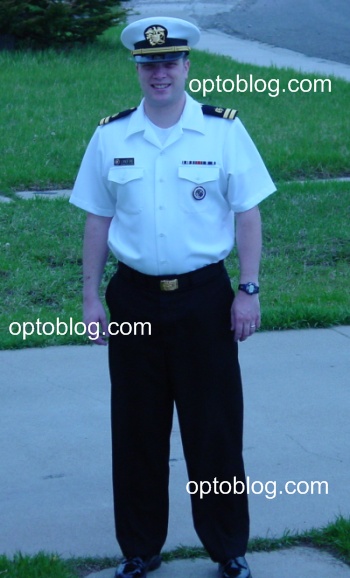USPHS Changes Uniform Rules
When I was in the United States Public Health Service detailed to the [American] Indian Health Service, they had started to transform the rules of uniform wear. Back in the day, PHS officers would just wear their uniform to work one day a week. When I arrived, the rule was now everyday.
And now in the further transformation of the corps, new memos have been handed down from RADM Steven K. Galson, M.D., M.P.H., Acting Surgeon General. Among them are:
- PPM 07-015 Phase out of the Service Blue Uniform, dated 28 August, 2007
The Service Blue uniform, also known as the Salt & Pepper, will be phased out and no longer be an authorized uniform of the PHS. Although a final date has not been established, the PPM specifies that this date shall not be later than 1 August, 2009. The Office of the Surgeon General recognizes that this policy has the potential to create consternation among officers.
- PPM 07-014 Wear of the Navy Uniform Sweater, dated 28 August, 2007
Presently, the sweater authorized for wear by our officers is that worn by the U. S. Army, utilizing PHS soft shoulder boards as insignia of rank and the name tag worn on the other authorized uniforms. There will be a transition towards wear of the sweater authorized by the U.S. Navy. The shoulder boards used will remain unchanged. Instead of the traditional name tag, this sweater requires the use of a leather patch with the officers’ name, rank and the letters USPHS embossed in gold. This new patch will be readily available at any Navy uniform store. Effective 1 January 2008 PHS officers are authorized to wear this sweater; however, they may continue to wear the Army sweater until 31 December 2008.
- PPM 07-013 Weekly Wear of the Battle Dress Uniform, dated 28 August, 2007
This PPM allows PHS officers to wear the Battle Dress Uniform (BDU) one day a week. I have designated Friday as the authorized day for wear of the BDU. Formerly use of this uniform was restricted for wear in austere settings, typically when responding to events such as natural disasters.
- PPM 07-012 Personal Appearance/Grooming Standards, dated 28 August, 2007
In the past, PHS officers were authorized to maintain a properly groomed beard in accordance to existing standards. Effective 1 January, 2008 beards are no longer authorized. Procedures will be established to accommodate those officers who cannot shave for medical reasons. In these cases there will be guidelines as to how the facial hair is to be groomed. Moustaches will continue to be authorized and groomed in accordance to existing standards.
Wow, so my favorite uniform, the historic Salt and Pepper, is being phased out. I’m glad the Acting Surgeon General acknowledges my consternation about this news. It has been our unique uniform ever since the Navy phased it out a long time ago. I’ll bet that the PHS is now phasing it out to be more in line with the Navy so that other service branches don’t think we’re some kind of weirdos who forgot how to dress properly.
For posterity’s sake, here’s me in 2005 when I was still on active duty in my favorite PHS uniform.

Now, for those of you who know anything about the Indian Health Service, clinics are usually located in very remote places, so many of the US PHS officers and civil service doctors/staff are a pretty relaxed group of people. A good bunch of them are out-doorsy types. Nobody puts on airs. And the people we serve are your humble American Indians whose culture has endured so many wrongs. I’m just curious to hear about what the effect of wearing BDUs once a week and uniforms every day will have, if any.
There are many Native American veterans, particularly Marines. They could be comfortable with others wearing uniforms, but I’m not sure how the majority of the people feel about receiving care from someone in uniform. Is this an issue or a non-issue?
Tags: PHS uniforms doctors










